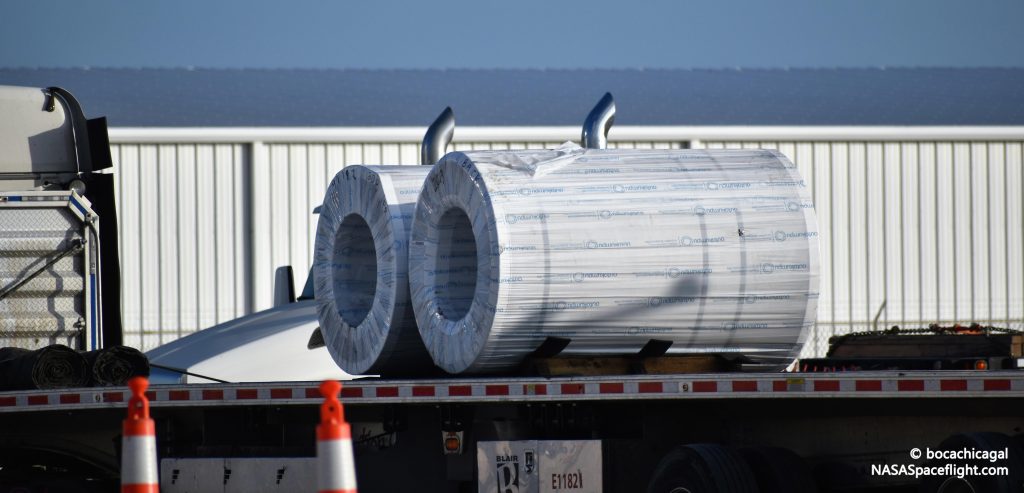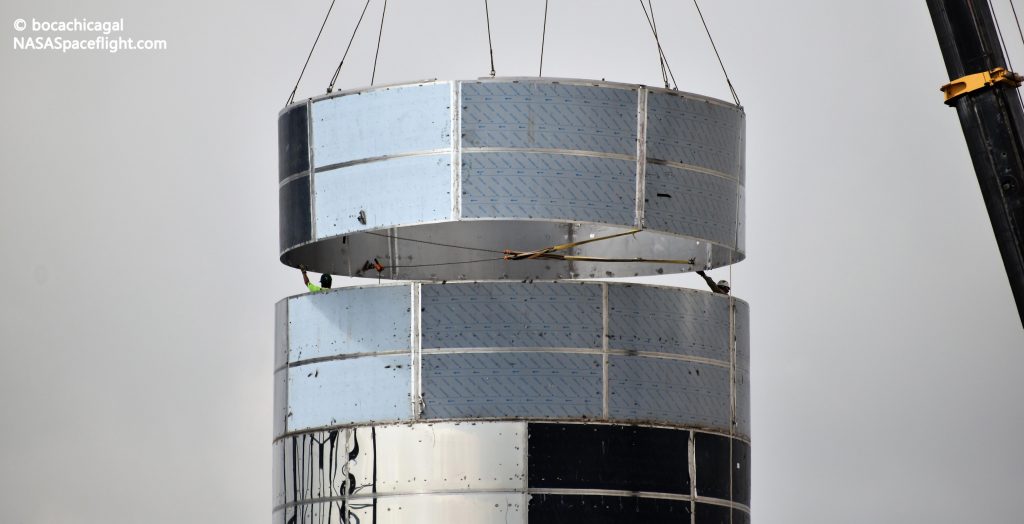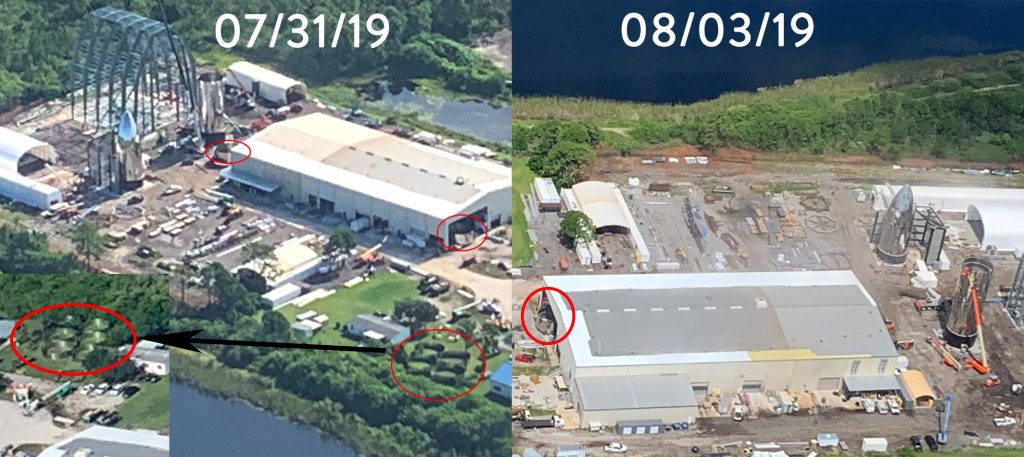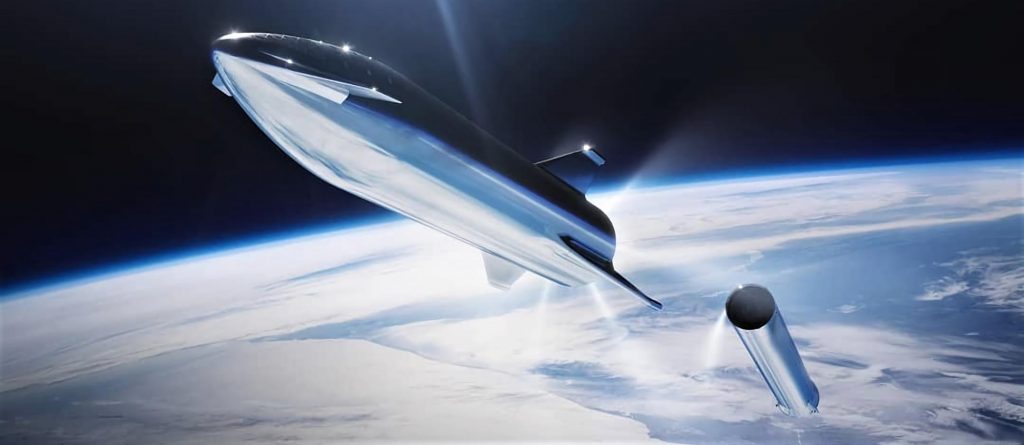Based on some basic analysis of recent photos of SpaceX’s East Coast Starship facility, situated in Cocoa, Florida, SpaceX has almost certainly begun fabricating and staging hardware that will eventually become part of the company’s first Super Heavy booster prototype.
This is by no means surprising but it does confirm the reasonable assumption that SpaceX is already working hard to ensure that the first Super Heavy booster(s) can be assembled as quickly as possible. Additionally, SpaceX appears to have started clearing brush in the process of preparing to transport the Florida orbital Starship prototype (“Mk2”) to SpaceX’s Pad 39A launch facilities, dozens of miles away.
Counting rings
The aforementioned “basic analysis” is more or less comprised of looking for and counting the massive steel rings that SpaceX has decided to build its Starships (and Super Heavy boosters) out of. By all appearances, SpaceX is doing nearly everything short of milling and preparing the raw materials (steel) internally. In Florida and Texas, giant rolls of stainless steel are delivered to the worksite by semi-truck, where SpaceX technicians prepare the rolls for sectioning (likely with a plasma torch or laser) and any necessary machining.


Intriguingly, SpaceX’s Texas and Florida teams are using different sizes of sheets – Florida has gone for taller segments while Texas uses rings that are a fair bit shorter ring, welding two rings together before installing each section on Starship. Florida’s rings are roughly 1.8m (6 ft; +/- 5%) tall.
In August alone, Cocoa has effectively doubled the height of the barrel section of its Mk2 orbital Starship prototype, jumping from 7-8 to 15 steel rings. The barrel section is now ~28m (90 ft) tall and Starship Mk2’s pointed nose section is still approximately 20-22m (65-70 ft) tall, adding up to a stacked height of 48-50m, approximately 10% shy of its final 55m (180 ft) height. Assuming that SpaceX hasn’t stretched Starship further since CEO Elon Musk’s September 2018 update, this leaves Starship Mk2 around 2-4 rings and a small nose cap shy of its full height (excluding legs).
Super Heavy rising
This brings us to even more recent views of SpaceX’s Cocoa Starship facility, taken on August 15th by local pilot Brian (Twitter: @flying_briann). A video from the flight offers an uninterrupted ~360-degree overview of the site, including glimpses of a surprising number of staged steel rings that have completed initial welding and are waiting for stacking and integration.
Two photos taken a bit less than two weeks ago provide a decent overview of SpaceX’s Cocoa facility. Of note, six staged rings are visible, as well as four additional rings in the form of two stacked sections of two rings. Those latter two sections (four rings) have since been stacked on Starship’s tank section, bringing it to its current 15-ring, ~28m height.

Despite the fact that Starship Mk2 appears to be just a few rings away from its final height, Brian’s August 15th overview revealed that no fewer than 11 additional rings (18m, 60 ft) are either staged or in the final stages of welding. Even if SpaceX has significantly stretched Starship over the last 10 or so months of design iteration, it seems exceedingly unlikely that Starship has grown by a full 10-12m (~20%).
Rather, these rings are probably the beginnings of SpaceX’s first Super Heavy booster prototype, a necessity before Starship can begin crucial orbital flight tests. Per the vehicle’s official 2018 specifications, Super Heavy will stand at least 63m (205 ft) tall before accounting for its landing legs/fins, requiring around 35 steel rings to complete its propellant tanks, interstage, and thrust structure.

According to CEO Elon Musk, Super Heavy will likely perform its first flight tests with approximately 20 Raptor engines, eventually arriving at a full 31-37 engines depending on the configuration. Musk also believes that Starship could be ready for its first orbital flight tests as early as December 2019, implying that SpaceX’s first Super Heavy prototype(s) could be fully assembled as few as 4-5 months from now.
In reality, 2020 is far more likely for both milestones, but Musk is not exactly well-known for his conservative schedule estimates.
Check out Teslarati’s newsletters for prompt updates, on-the-ground perspectives, and unique glimpses of SpaceX’s rocket launch and recovery processes.

<!–
–>
var disqus_shortname = «teslarati»;
var disqus_title = «SpaceX’s first Super Heavy hardware is already being built at Florida Starship campus»;
var disqus_url = «https://www.teslarati.com/spacex-first-starship-super-heavy-booster-florida/»;
var disqus_identifier = «teslarati-110944»;

